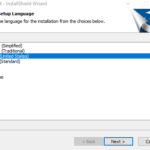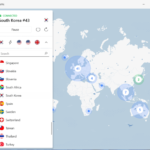If you are receiving the “USB device not recognized” error in Windows 10 after you plug in a device, this tutorial is useful for you.
Many Windows 10 users say that they have face this error pop up.
“USB Device not recognized. The last USB device you connected to this computer malfunctioned, and Windows does not recognize it.”
Or
“USB Device not recognized. One of the USB devices attached to this computer has malfunctioned, and Windows does not recognize it. For assistance in solving this problem, click this message.”

USB Device not recognized
What to do if USB device is not recognized in Windows 10?
Speaking of USB problems, many Windows 10 users reported the following problems as well:
– Windows USB not working – This is a relatively common problem, and if your USB is not working on Windows, you should be able to fix that issue by updating your drivers.
– Windows USB ports not working – Many users reported that USB ports aren’t working on their Windows PC. If you have this problem, we would recommend you to try the solutions from this post.
– USB not detected, not showing up Windows 10 – If your USB isn’t detected or if it’s not showing, be sure to try one of the solutions from this article.
– External hard drive not recognized Windows 10 – This problem can affect both external hard drives and flash drives. However, the methods are the same for both flash and external hard drives.
See more: How to Fix USB device not recognized in Windows 11
How To Fix USB device not recognized in Windows 10
Method 1. Restart your computer
First of all, you should plug your USB device out, wait for 1-2 minutes and then reboot your computer. Plug your USB device back in again.
Method 2. Try a different computer
If your USB device not recognized problem continues to happen, you can try plug your USB device into a different computer. If it doesn’t work on the second computer, your USB device could be at fault. We strongly advise you to get it repaired or buy a new one.
Method 3. Plug out other USB devices
Too many USB devices on the same computer can cause a conflict, which could stop the running of some devices.
In order to fix this problem, you need to disconnect other USB devices and check if the USB device that you intend to use works.
Method 4. Change the Power Management setting for the USB Root Hub
1. Open Device Manager.
2. Find and expand Universal Serial Bus controllers, right-click USB Root Hub option and select Properties.
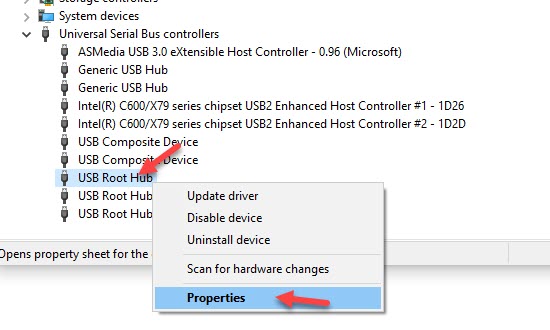
3. Go to Power Management tab, untick the Allow the computer to turn off this device to save power. Click OK.
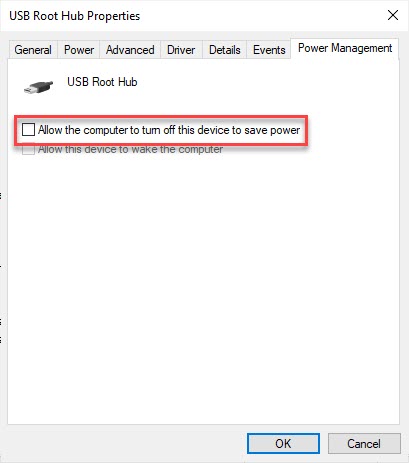
4. Repeat these steps for all USB Root Hub devices on your computer.
After the settings, plug your USB device back in to check if your computer is able to recognize it.
Method 5. Change the power supply setting
1. Go to Control Panel > Hardware and Sound > Power Options.
2. Click Choose what the power button do.
3. Click Change settings that are currently unavailable.
4. Untick Turn on fast startup and click Save changes.
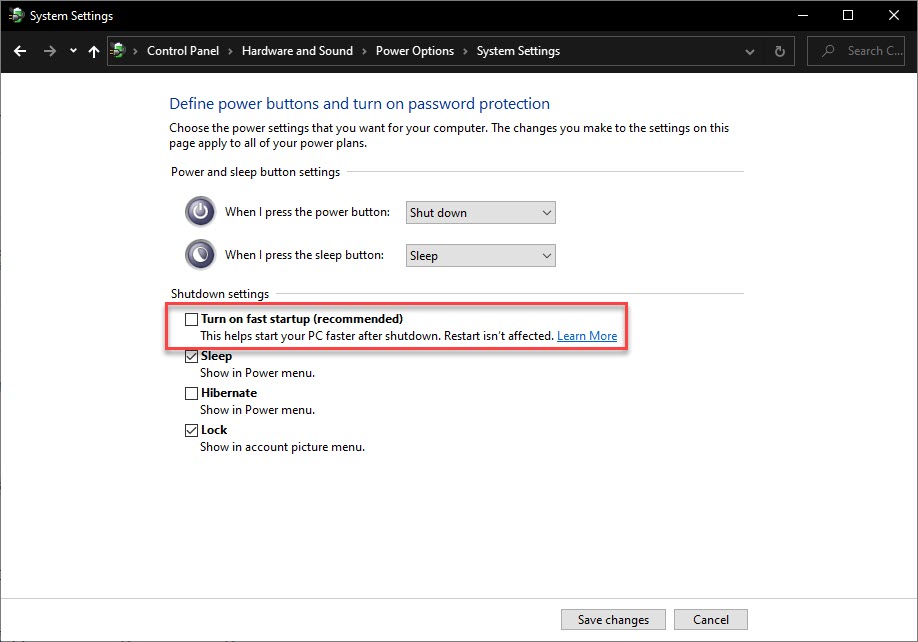
5. Restart your computer and then plug in the USB device to check if it works.
Method 6. Change the USB selective suspend settings
1. Open Control Panel and select Power Options.
2. Click Change plan settings.
3. Click Change advanced power settings.
4. Select USB settings and expand USB selective suspend settings.
5. Disable both Plugged and On battery in settings.
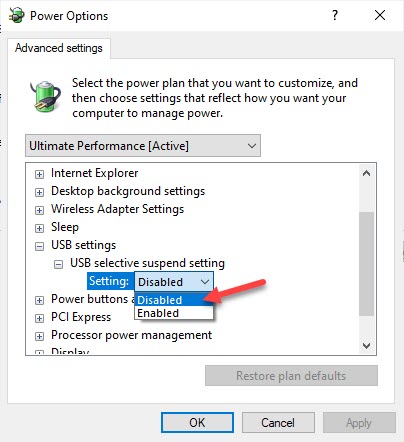
6. Click Apply > OK.
Method 7. Update the USB port driver
If your USB device is still not working, it’s very likely that you’re using a wrong USB driver altogether.
1. Open Device Manager.
2. Expand Universal Serial Bus controllers section, right-click USB Root Hub and click Update driver from the menu
3. Now click Search automatically for updated driver software. Windows will automatically install the necessary drivers.
4. If you have more USB Root Hubs, you need to repeat this operation a couple of times.
After doing that, restart your computer and your USB should start working again without any problems.
The methods above may resolve it, but if they don’t, or you’re not confident playing around with drivers manually, you can do it automatically with Driver Easy. Driver Easy will automatically recognize your system and find the correct drivers for it. You don’t need to risk downloading and installing the wrong driver, you don’t need to know exactly what system your computer is running, and you don’t need to worry about making a mistake when installing.
See more: Download Driver Easy for Windows 10
In this video, we are gonna show you how to fix USB Device not recognized in Windows 10:
That’s about it.

![How to Configure Proxy Settings on Android Devices [FREE] How to Configure Proxy Settings on Android Devices [FREE]](https://windows10freeapps.com/wp-content/uploads/2024/12/setting-up-a-proxy-for-a-wi-fi-network-1-150x150.jpeg)
